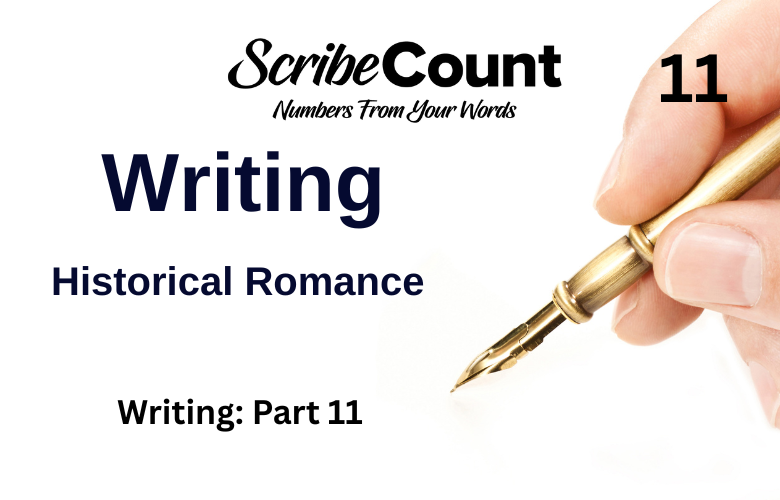Historical Romance for Indie Authors: How to Write Love Stories Across Time
Historical romance brings together the best of two worlds: the emotional satisfaction of a well-earned love story and the immersive richness of a bygone era. These novels invite readers to fall in love in corsets, cravats, carriages, and candlelight—to experience timeless passion amid war, class divides, family duty, or scandalous societal expectations.
Unlike contemporary romance, historical romance adds the weight of tradition, status, and strict social norms to every interaction. A glance can mean everything. A touch can break the rules. The stakes of love are often as high as the stakes of survival. For indie authors, historical romance offers a devoted readership, massive genre flexibility, and an opportunity to explore the emotional universality of love—no matter the century.
A great historical romance doesn’t just dress up a modern story in old-fashioned clothes—it understands the time period and the challenges it presents. This guide will help you write emotionally rich, historically grounded romances that sweep readers off their feet while anchoring them in the world of the past.
What Makes a Historical Romance Novel?
A historical romance novel is set in a past time period—generally at least 30 years before publication—and centers around a romantic relationship that concludes with an emotionally satisfying and optimistic ending. While the love story is the heart of the book, the historical setting provides the soul: a world with its own rules, limitations, and allure.
Essential elements include:
-
Historical Authenticity: The time period should feel real, from the dialogue to the dress, manners, and mindsets. Readers want to feel transported.
-
Central Romance Plot: The story must focus on the romantic arc between the protagonists. All subplots should support or enhance this central relationship.
-
Emotional Intimacy and Conflict: Whether it's a forbidden romance, an arranged marriage, or lovers separated by war, the emotional stakes must be powerful and period-appropriate.
-
Happy Ending: Readers expect a “happily ever after” (HEA) or “happy for now” (HFN). Heartbreak may happen along the way, but the journey ends with love.
The historical backdrop should enhance—not overshadow—the romance. Whether you’re writing about medieval knights, Regency rakes, or WWI nurses, the past should shape the characters’ challenges and deepen the stakes of falling in love.
The Popularity of Historical Romance
Historical romance remains one of the most beloved and enduring genres in popular fiction. From Jane Austen’s Pride and Prejudice to the steamy exploits of the Bridgerton family by Julia Quinn (available on Amazon), readers have long been drawn to love stories set in the past.
Bestselling authors like Lisa Kleypas, Beverly Jenkins, Courtney Milan, and Tessa Dare have brought the genre to new heights—each adding unique voices, diverse representation, and deeper emotional layers to classic tropes. Adaptations like Outlander, Bridgerton (Netflix), and The Spanish Princess continue to fuel genre interest across generations.
For indie authors, historical romance offers strong reader loyalty, robust Kindle Unlimited demand, and the chance to carve out a niche with unique settings and character dynamics. Whether your story is set in 1880s Montana or Napoleonic France, readers are eager to fall in love—again and again.
Reader Expectations for Historical Romance
Historical romance readers want stories that sweep them into the past and stir their hearts. They look for a powerful emotional journey, immersive world-building, and characters who grow through love.
Here’s what they expect:
-
Well-Researched Settings: The time period must feel alive. Whether it’s the etiquette of a Regency ball or the grit of the American frontier, readers want details that ring true.
-
Slow-Building Tension: Much of the genre’s appeal lies in restraint. Glances, proximity, forbidden moments—these small things carry massive emotional weight.
-
Distinct Voices: The protagonists must feel of their time, not modern characters in costume. Their internal struggles should reflect the constraints and concerns of their era.
-
Obstacles to Love: Whether it’s social class, arranged marriage, scandal, war, or personal trauma, love should be hard-won. The more impossible the romance seems, the more satisfying the ending.
-
Satisfying Resolution: Historical romance readers invest deeply. They want catharsis. They want commitment. Most of all, they want to believe that love conquered all.
Balance is key: deliver both emotional payoff and historical believability, and your readers will stay loyal across series and settings.
Common Tropes in Historical Romance Novels
Historical romance thrives on tropes—but the magic is in the execution. Here are some of the most beloved elements:
-
Marriage of Convenience: Two people marry for practical reasons and fall in love along the way. This trope thrives in Regency and Victorian settings.
-
Enemies to Lovers: Misunderstandings, social rivalry, or political opposition keep them apart—until they can no longer deny their attraction.
-
The Governess / Tutor: A lower-status character enters the household of a noble or wealthy family, sparking forbidden romance.
-
Second Chance at Love: Lovers reunite after war, scandal, or heartbreak. Set against sweeping historical changes, their reunion carries extra weight.
-
The Rake and the Wallflower: A roguish nobleman falls unexpectedly for a quiet, overlooked heroine—who proves to be his equal in wit and strength.
-
Scandal and Reputation: One kiss can ruin a life. Navigating love under the scrutiny of society adds rich tension.
Tropes aren’t limits—they’re frameworks. Use them to explore deeper emotions, not just to check boxes.
Structuring Your Historical Romance Novel: The Plot Map
Here’s a classic romantic arc adapted for historical fiction, built to emphasize character growth and escalating stakes:
-
Period and Premise: Introduce the historical setting and establish the societal rules that will challenge or shape the romance.
-
First Meeting: The protagonists encounter each other—perhaps with tension, distrust, or instant spark. Make it memorable.
-
Emotional Development: They grow closer through shared experiences, conflict, or forced proximity. Attraction builds alongside deeper connection.
-
The Obstacle: A major societal, personal, or external force threatens their bond. Misunderstanding, scandal, or sacrifice may drive them apart.
-
The Turning Point: One or both characters confront their deepest fears or flaws. The truth is revealed, or a choice must be made.
-
Declaration and Resolution: Love wins—through a marriage, a vow, a public act of defiance, or a deeply personal reconciliation. The emotional payoff is everything.
Final Thoughts for Indie Historical Romance Writers
Writing historical romance means balancing head and heart: the intellect of research with the emotion of love. You are both a historian and a storyteller. Your goal is not just to show how people lived in the past—but how they loved.
As an indie author, you have the freedom to write bold, diverse, and original stories. You can explore underrepresented cultures, lesser-known time periods, and unconventional love stories. You can bend tradition to reveal truth. And with every well-researched, emotionally authentic romance, you help keep history alive.
Let your characters fall in love with each other—and let your readers fall in love with them. In corsets or cavalry boots, at court or in the countryside, love stories endure. And yours can, too.

